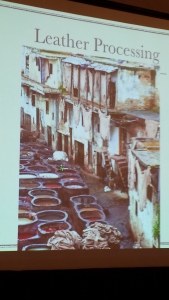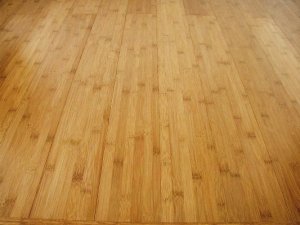Referencing the fabulous continuing education course of a couple of weeks ago, my story continues with a bit more regarding the content of the course and also the context of having it held in Santa Fe. You might remember that the focus was on natural and engineered construction and design materials including leather, concrete, natural stone, and engineered and natural woods, cork, terrazzo, recycled rubber, glass and paper.
To have had this class in an architecturally unique environment such as Santa Fe in a beautiful, soulful, old historic structure like the La Fonda Hotel, in a meeting room with hand-carved wood beams and architectural details, antique art pieces and an intimacy that one can’t get in a new facility, it made the subject matter much more relevant and compelling.
in a meeting room with hand-carved wood beams and architectural details, antique art pieces and an intimacy that one can’t get in a new facility, it made the subject matter much more relevant and compelling.
While we have been awakened to, if not shamed into realizing the responsibility toward sustainability, it is also fascinating to see the back-tracking and re-thinking that have occurred. For example
the bamboo bandwagon was so HOT and then, like a hot potato dropped from the design narrative when studies showed that in most cases, a high content of formaldehyde used in processing of it as a flooring material negated the healthful virtues of this otherwise natural, renewable resource. Tanning leather… the actual chemical ingredients (chromium) used to process leather in many places, Morocco as an example, was so toxic and penetrated the soil into the water table causing untold deadly health issues. Newer technology has almost eliminated such practices – but for years it went unchecked and a bazillion products were sold under the guise of leather being “green.”
the actual chemical ingredients (chromium) used to process leather in many places, Morocco as an example, was so toxic and penetrated the soil into the water table causing untold deadly health issues. Newer technology has almost eliminated such practices – but for years it went unchecked and a bazillion products were sold under the guise of leather being “green.”
We are often so knee-jerk and willing to follow a movement about which we don’t get all the facts. While sustainability is a seeming moral obligation and only makes sense for the good of the planet and our custodial responsibility, the manner in which we go about it to allow things that are not completely vetted and then the restrictions we impose and the guidelines that we set forth are often misguided and impractical.
I sat in a conference room once that was in a suite of a highly regarded LEED building – that suite’s designers and those of the entire building were regaled with honors for their efforts and accomplishments, yet the room was asphyxiating to me as the off-gas of the linoleum conference table was too much to bear. I thought – how can they meet encapsulated in this room for extended periods of time when I was only there on a passing tour? Phew! Not practical for me! Oh, but it comes from linseed oil and a complex recipe of other wonderfully sustainable ingredients – it’s natural!
We now hear so much about BUY LOCAL and it is both to support our local communities but also to reduce the fuel costs to transport things from afar. Why eat a blueberry in the fall in Vermont when the season is clearly past and the berry comes from – who knows where – but not close by. We can get bananas and mangoes all year round in Alaska and are spoiled by the incredible supply of endless exotic produce – but it is not an inexpensive supply chain. Let those who shout the loudest do without a pineapple when the desire arises.
but it is not an inexpensive supply chain. Let those who shout the loudest do without a pineapple when the desire arises.
When Toyota’s Prius cars came out there was a commentary that compared the cost to drive an inefficient fuel-eating gas-guzzler against the fuel cost to build a new hybrid Prius. One was actually better off, for the good of the planet, driving their old car until it died rather than spend the amazing amount of energy to build a new car. Now, I have not fact checked this, but the analogy is interesting.
I was raised to respect things. I collected aluminum cans in every trash can on the beach growing up as it was regarded as a recyclable resource even back in the day…but we were also encouraged to pick up trash when we passed it and to care for everything with which we came in contact. That concept of respect is what this sustainable movement is all about. Respect and care, thoughtfulness and smart decision-making to that respectful end.


